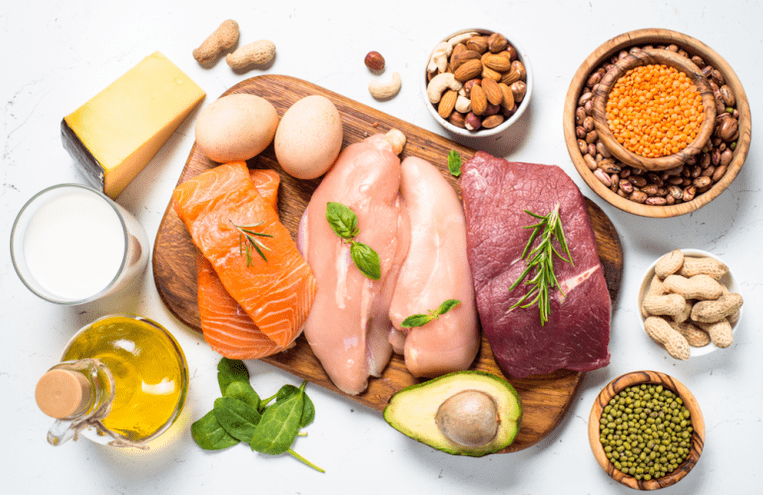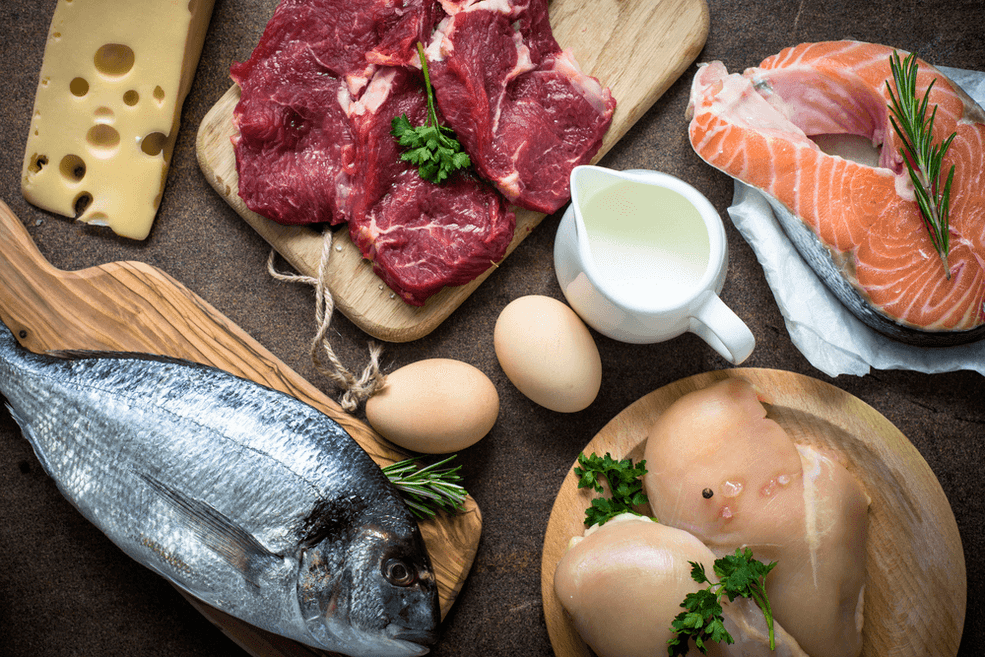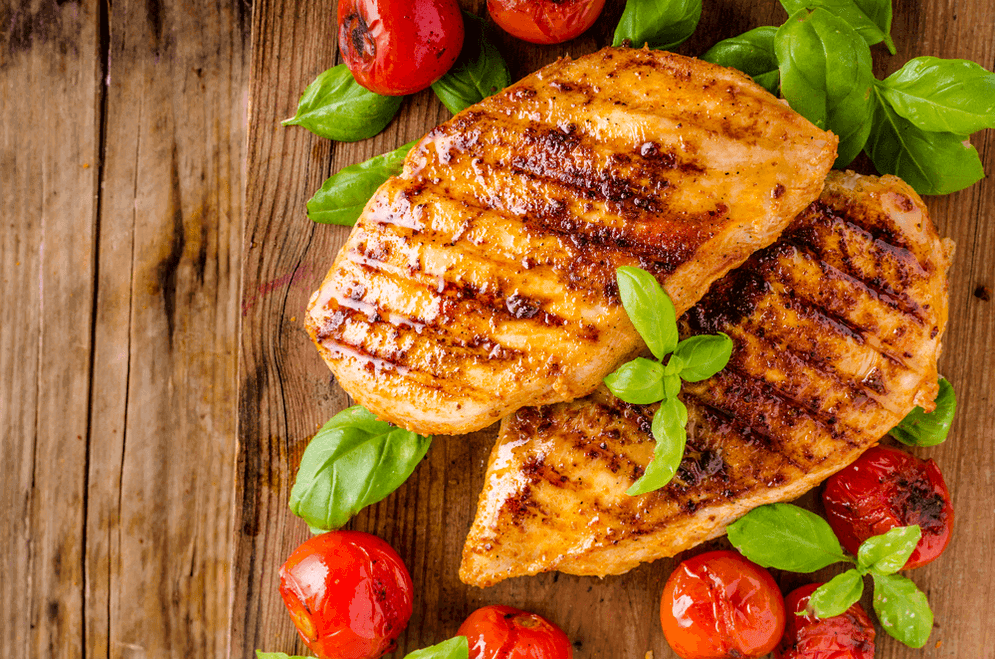
In most cases, excess weight is due to excess supply of adipose tissue, which is accumulated as a result of the chemical transformation of carbohydrates that enter the body. Although obesity is based on certain disturbances in the endocrine and digestive systems, the most convenient and painless solution to the problem remains to limit the source of excess calories in the daily nutrition process. Using a carbohydrate-free diet, we automatically trigger the reaction to burn stored reserves by stopping or drastically reducing the entry of easily digestible carbohydrates into the stomach.
What is a no carb diet?
It is on a carbohydrate-free diet that athletes lose extra pounds before competitions, artists before filming, and public figures when they need to get in shape. Athletes even have a special term for such nutrition. This is called "drying" - by eliminating carbohydrates from the diet, subcutaneous fat deposits are removed, and the comfort and flexibility of ligaments and muscles are improved. But life without carbohydrates is a difficult test for those who have had a long enough sweet tooth, who have to radically change their taste preferences. It requires not only determination, but also enough patience and willpower.
There is another side of the coin - the complete rejection of carbohydrates in favor of protein products leads to a condition that nutritionists call the completely incorrect term carbophobia (literally "fear of carbohydrates"). Avoiding the tiniest breadcrumbs or a piece of sugar like fire, thinking about nothing but losing weight, sitting for months "on omelettes and cutlets", fans of a no-carb diet inevitably "win" with digestive and metabolic problems. in some cases, it is fraught with disorders of the higher nervous system, activity, memory loss, depression and sociopathy.
Long-term or permanent abstinence from carbohydrates leads to acid-base imbalance in the direction of acidification of the body, which inevitably leads to a decrease in immunity and premature aging. Side effects of a long-term low-carb diet are problems with the intestines, kidneys, arthritis, gout and other diseases.
Below we will look at several examples of a carbohydrate-free diet and the scheme of its use, which allows you to normalize metabolic processes, get rid of excess weight and at the same time not go to extremes, fill the body with proteins. Animal origin with harmless chemistry and energy.
Biochemical and anatomical basis of a low-carbohydrate diet
A decisive argument for a low-carbohydrate diet is the nature of the body's reaction to the entry of even a small amount of sugar into the stomach. The pancreas immediately reflexively starts releasing insulin into the blood and digestive enzymes into the stomach, which immediately increases appetite (hence why they say appetite comes with food). As a result, when we eat foods rich in carbohydrates, we almost always eat more than our objective needs. Protein foods do not have such an attractive effect on the "pancreas", the production of hormones and enzymes continues to work, satiety occurs gradually and completely. Proteins are broken down in the gastrointestinal tract much longer than carbohydrates, so the feeling of satiety lasts for several hours, and if there are three or four protein meals a day, there is no need for snacks.
Principle 250 kcal
Most likely, it will not be possible to give up carbohydrates completely - simply because they are completely included in protein meals, albeit in minimal quantities. But this is not scary, the main thing is not to exceed the specified amount of "carbohydrate" kilocalories.
A low-carb diet certainly requires willpower, but its use can be very disciplined. It is enough to remember a single number - 250. This is the number of energy units - calories - in the daily volume of carbohydrates entering the body. Of course, we will have to carefully weigh all the dishes and calculate their energy value using special tables or notes on the restaurant menu, but this is an almost unavoidable cost of any serious diet.
Carbohydrate mono-diet: effective, but monotonous
An ideal low-carb diet for guaranteed and quick weight loss involves separate daily meals - on the first day of the diet, you eat only chicken, on the second - only eggs, and on the third - only cheese or cottage cheese. This is the fastest, but also the most "tasteless" and monotonous way to lose weight. Not everyone is ready for such sacrifices, so we will lose weight without fanaticism and combine business with pleasure - a therapeutic effect with gastronomic pleasures that promise tasty and healthy products based on animal and vegetable proteins.
By the way, the above-mentioned critical 250 infamous carbohydrate kilocalories per day should also be obtained not from bread and sweets, but by harmoniously including complex carbohydrates (digestible) in the diet - starches, cereals, non-whole vegetables without yeast. grain bread.
Basic items of the carbohydrate-free menu
List of protein foods for a protein diet:
- lean meat - chicken, turkey, rabbit, veal;
- offal - cooked heart and liver;
- duck, chicken, quail eggs;
- sea fish fillets, crabs, shrimps, lobsters, marine cephalopods;
- dairy products - kefir, yogurt, cereal cottage cheese, low-fat sour cream and hard cheese;
- leafy vegetables (cabbage), artichokes, green peas, beans, zucchini, onions, garlic, garden herbs. You can eat mushrooms, but with caution, because mushroom proteins are different from animals;
- sour berries and fruits, as well as avocado;
- nuts and seeds.
Meat and fish should be steamed, in the oven or on the maximum grill, but under no circumstances should they be cooked in a pan or deep fried.
A healthy diet excludes sausages, sausages and pies, which contain many questionable additives based on carbohydrates and trans fats.
When choosing food suppliers, preference should be given to farms where meat and dairy animals are kept in comfortable conditions, where various growth hormones and antibiotics are not taken in their feed. You should not rely on price tags in supermarkets - if you are on a diet, carefully read the instructions on the packaging and study in advance the list of food additives, many of which are harmful to health, but are used in notorious production. healthy" products.

Forbidden carbohydrates
Now about the main thing for every diet - what is forbidden. The following are prohibited on a low-carb diet:
- bread except whole grains without yeast;
- everything made from flour - pasta, pizza, pies, khachapuri, cakes, pies;
- chocolate and confectionery;
- sweet and sour-sweet fruits and berries;
- vegetables rich in starch (potatoes, carrots, corn, beets);
- semi-finished industrial products. Regardless of what manufacturers write on the packaging, they almost always contain carbohydrate additives and preservatives, even genetically modified oils;
- fruit juices and carbonated drinks;
- alcohol in any form.
Devoted carnivores will have a hard time resisting a glass of red wine with their favorite cuts, but here you have to choose: health or pleasure. Alcohol, in addition to its direct toxic effect on the body, is also a strong appetite stimulant and a fairly high-calorie product - the calories obtained with it can be safely added to the daily limit of 250 kcal of the protein diet.
7 day menu

Monday
- Breakfast - Cheesecakes made from low-fat cottage cheese with bran.
- Lunch - vegetable salad with greens, 200 g of chicken breast with greens.
- Snack - Orange.
- Dinner - Turkey with 100 g of cooked vegetables.
Tuesday
- Breakfast - omelette with vegetable salad or cooked vegetables. Black tea without sugar.
- Lunch - vegetable cream soup with pieces of turkey or chicken.
- Snack - Green apple.
- Dinner - salmon baked in the oven.
Wednesday
- Breakfast - Sugar-free muesli with milk and dried apricots or other dried fruits.
- Lunch - Lentil soup with chicken breast.
- Snack - Almonds or other nuts (a handful).
- Dinner - Cherry tomato, arugula, canned tuna (1 can) and mozzarella salad.
Thursday
- Breakfast - oatmeal with sugar-free water. A banana (can be chopped and added to oatmeal).
- Lunch - vegetable soup with veal meatballs.
- Snack - Orange or grapefruit, a glass of citrus juice.
- Dinner - low-fat steamed fish.
friday
- Breakfast - a mixture of 1 banana, a glass of fresh or thawed pitted cherries and a glass of milk. Blend in a blender.
- Lunch - Chicken pilaf 200 g.
- Snack - green tea with a piece of hard cheese.
- Dinner - chicken or turkey with vegetable salad.
Saturday
- Breakfast - Egg white omelette. Tea without sugar. 1 banana.
- Lunch - Boiled chicken breast with 100 g of brown rice.
- Snack - A sandwich made of unleavened bread, soft cheese, ham, lettuce and sliced tomatoes.
- Dinner - vegetable stew with meat. A glass of kefir or sugar-free drinking yogurt.
Sunday
- Breakfast - 1 boiled egg. Diet bread with hard cheese.
- Lunch - Creamy soup of champignons or wild mushrooms. You can add chopped turkey or chicken to the soup.
- Snack - Orange, green apple or a handful of nuts.
- Dinner - Vegetable salad, 100 g of baked meat or fish.
Porridge for a low-carb diet
Porridges on water occupy the border position. When dieting without carbohydrates, it is recommended to include four types of grains in the menu:
| Nope. | name | Protein content | Carbohydrate content |
|---|---|---|---|
| 1 | buckwheat | eleven% | 68% |
| 2 | pea | 21% | 50% |
| 3 | Oatmeal | 12% | 65% |
| 4 | Quinoa | 14% | 64% |
Porridges are especially useful in the breaks between periods of active weight loss, when it is necessary to restore the balance of fats, proteins and carbohydrates in the body.
A questionable alternative: the keto diet A very popular type of low-carb diet in the United States, with its notorious fast food culture, is the ketogenic diet, which allows you to eat large amounts of animal fats as well as proteins. This scheme has both supporters and opponents. The main argument of the latter is the damage of fatty foods to the cardiovascular system due to the deposition of cholesterol on the walls of blood vessels. Hard to disagree with that.
Diet timing and precautions
The effect of the diet begins to be seen after two to three weeks, after switching to proteins with strict daily separate meals, you can lose weight within a week. Limitation of quickly digestible foods will almost inevitably lead to intestinal disorders - constipation, flatulence caused by a decrease in the content of plant fiber in food. When eating a meat menu or eating fish and seafood, you should drink at least two liters of fluid a day, eat soup, and take mild laxatives if you have persistent constipation. After a month, you need to take a break - from two to four weeks - to prevent the development of persistent carbophobia. It will restore the disturbed protein-carbohydrate balance and intestinal motility. When taking a break from the diet, you should not go too far: the diet must be balanced and strict, otherwise you will not only lose all the gains, but also get extra fat deposits and you will have to start fighting. again against overweight.














































































